History is a master storyteller. In fact, everything we know of the past, we know from history. The ancient Egyptians and the Romans are centuries apart but they have left us their legacy in their art, whether in the form of sculpture, painting, or architecture. Another empire that has left us their unique version of art and architecture is the Mughal Empire — an empire that ruled South Asia for almost three centuries. Artwork left behind by the Mughal Empire comes in various forms. Certain emperors had their own preferences during their rule. Some emperors commissioned artists to illustrate their lives in court whilst others had luxurious tombs built as tributes for their loved ones.
The Mughal Empire or the Mongol Empire which lasted lasted from 1526–1761 was founded by the Chagatai Turkic prince, Babur. The prince was a descendent of Turkic conqueror Timur from his father’s side and Gengis Khan from his mother’s side. Considering his ancestry, he had the thirst for conquest pulsing in his veins. He was succeeded by his son Humayyun, who unlike his father, didn’t inherit the talent for conquest. He was a much gentler ruler who did not share an ambition for conquest. His interests were focused on less aggressive pretenses such as poetry and paintings. Humayyun was the first emperor who commissioned Iranian artists to set up the first Mughal Painting Studio. Hummayun died in 1556 after he fell from the stairs in his library. His tomb serves as the first masterpiece of Mughal architecture and was commissioned to be built by his son, Akbar.

The third emperor of the Mughal Empire, Akbar, is regarded as one of the greatest rulers the world has ever seen. He inherited his father’s passion for the arts. He had paintings commissioned to illustrate the history of his reign. Akbaranama, 1556–1605, was commissioned by Akbar himself to showcase the rise of his empire in the form of 116 miniature paintings that are currently on display at the Victoria and Albert museum.
It was during his rule that the style of Mughal Paintings was born. Mughal painting was initially a court art; the emperor employed artists to illustrate his rule and life. Of course, the paintings may not be accurate since the emperor dictated what his artists would illustrate. Akbar specifically had his triumphs in battle painted.(Mughal painting is a form of Persian miniature.) One famous artist who was tasked with painting most of Akbar’s rule was Farrukh Hussein. Most of his artwork was painted using opaque water colour on gold paper. The finest artistic media used to annotate the daily lifestyle of one of the finest empires. Distinct features of Mughal paintings include the bright colours used along with the features of the subject drawn with pointed noses and elongated eyes. Both these features were considered the height of beauty, elegance, and grace. The process involves three steps. The first begins with sketching the composition, the second is laying down the colour work, and the third, finally adding the stylised features to the portraits.
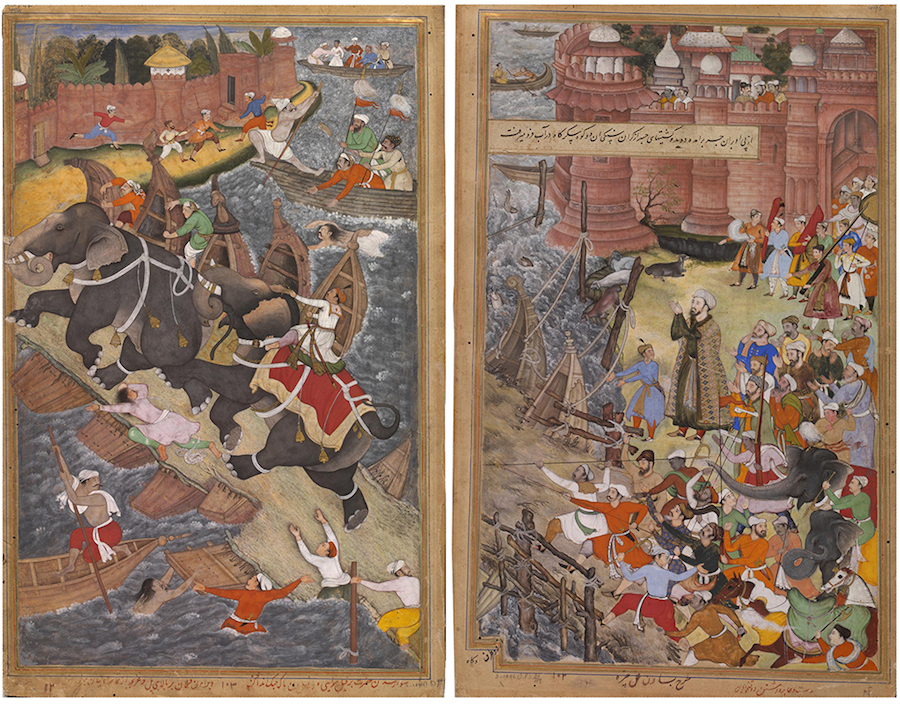
Akbar passed on the strongly built and powerful Mughal empire to his eldest son, Prince Salim. The prince was not interested in extending the Mughal rule. Upon his coronation, he took on the name Jehangir that translates to Conqueror of the World. He was a connoisseur of the arts from paintings to buildings. Mughal miniatures, also referred to as Persian miniatures, blossomed and grew during his reign.
Unlike his father who had artists illustrate his triumphs in battle, Jenhangir had the paintings focus on animals, birds, and life at court. He commissioned the Tuzuk-i-Jahangiri, an illustrated version of memories of his reign. During his reign, though the style of the paintings remained the same, the colours were more muted with emphasis on finer brush work. The compositions became less crowded and movement became less dynamic. The painters he commissioned added human elements to the paintings to make them seem less gentle than Akbar’s rule. Painters from that period include Bishandas, a master portrait artist, Ustad Mansur, an expert in animal studies, and Abu Al-Hasan, who was praised as “wanderer of the age.”
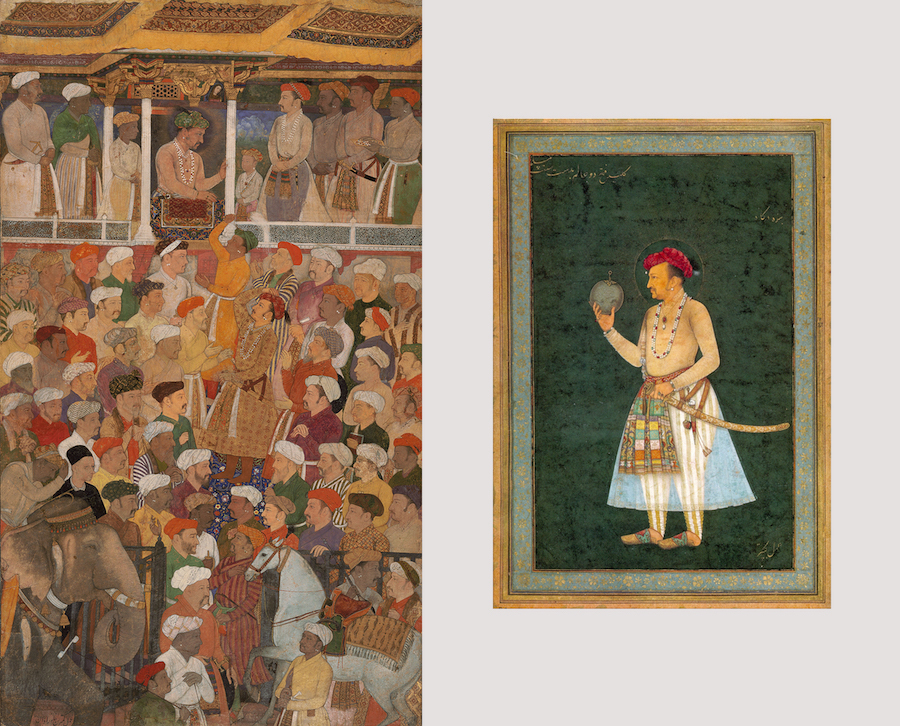
There is a legend associated with Jenhangir from when he was a young prince during his father’s rule. It’s a tragic story. Not one as tragic as Romeo and Juliet but the sentiments are open to interpretation. One day, at his father’s court, the young prince, then known as Salim, laid eyes on a dancer named Anarkali. As time passed, they courted each other but when he told his father he wanted to marry a commoner, Akbar was against it. He sent Salim on a quest, and had his guards arrest the court dancer under the accusation of seducing the prince. He sentenced her to death but not a short death. He ordered his guards to bury her alive inside the bricked walls of Lahore Fort, leaving her to die of suffocation. When Salim ascended to the throne, he had a tomb constructed for his beloved. An inscription on Anarkali’s grave reads, “Ah! If I could behold the face of my beloved once more.” The name of the writer is also present on the marble as “Majnun Salim Akbar,” which translates to “Salim, the son of Akbar.”
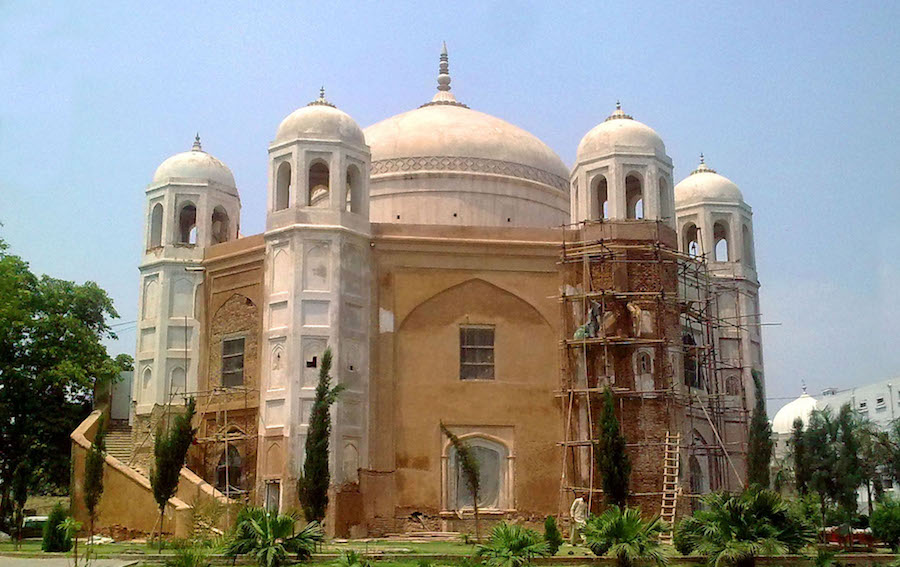
Jehangir was succeeded by his second son, Shah Jahan. Shah Jahan’s rule is glorified as the golden age of the Mughal Emperor and was at its zenith during his rule. He is also referred to as the ‘architectural king’ and is most known for building the Taj Mahal. The Taj Mahal is covered white marble inlaid with semi precious and rare stones that were brought from all over South Asia. The architecture struck a resemblance to Islamic architecture and also drew elements from Indian, Persian, and other provincial styles to create one new unique style of architecture known as Mughal Architecture. Double domes, recessed archways, and park-like surroundings were common features of the architecture along with the stress on symmetry and balance.
The story behind the Taj Mahal is a famous one, he had it built as a tomb for his wife. However, the marriage wasn’t as romantic as the tomb he built for her. Mumtaz Mahal was in fact married happily until Shah Jahan had her husband murdered, and then married her himself. She was his third wife and died in labour giving birth to their fourteenth child. He wanted the Taj Mahal to be one of its kind. To ensure this, he had his guards gouge out the eyes of the architects and had their finger tips severed. Shah Jahan also issued the construction of the Moti Mahal and Red Fort, both also located in Agra, India. It was during this period that white marble became the preferred material used for building. He abolished some structures built by Akbar and had them reconstructed in white marble.
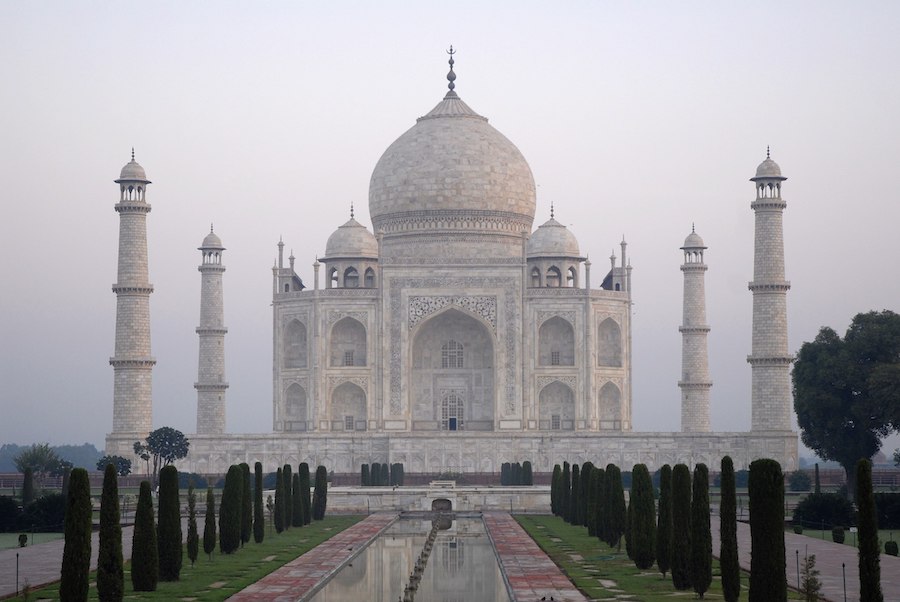
Shah Jahan’s rule came to an abrupt end when he suddenly fell ill. His throne was usurped by his son Aurengzeb. Many rulers in South Asia did not accept Aurengzeb as emperor, stating that a son could not usurp his father’s place. Aurengzeb, could be seen as a reincarnation of Babur, the first Mughal emperor. He had no interest in the arts. His only passion was conquering lands to rule over. He became the Mughal emperor who ruled the most territory. Even though he was not interested in the arts, a few Mughal architectural landmarks were constructed during his time such as Bibi ka Maqbara, which he had built for his wife, and Badshahi Masjid. Bibi ka Maqbara, was designed by the son of the architect who built the Taj Mahal and thus they both strike a resemblance. Badshahi Masjid is claimed to have been the biggest building to exist in the 17th century. Even though it is a mosque, it was initially used for military regime by Aurengzeb, and then by the British when they conquered South Asia. The redstone of the mosque is decorated with patterns and unobtrusive lines in the white marble.


The Mughal Empire continued to exist for centuries but started to decline in the 18th century. The territory started falling into the hands of the Marathas in 1785. The British then took control of the empire by 1803, and so they exiled the last Mughal, Bahadur Shah II to Yangon, Myanmar after his involvement to win the empire back during the Indian Mutiny. The Indian Mutiny was the first war of independence raged against the British and proved unsuccessful. He wrote poetry during his time in exile until his death. He adopted the pen name Zafar, translated, it means victory. He died at the age of 87 and was buried in an unmarked grave, a final act of humiliation bestowed upon him by his British captors. His grave was finally found in 1991 and marked to remember the king for what he was, a symbol of how an empire existed and ended with him — an empire possibly not as well known in popular culture as the Roman Empire, nevertheless equipped with rulers as great, tucked away in the pages of history.
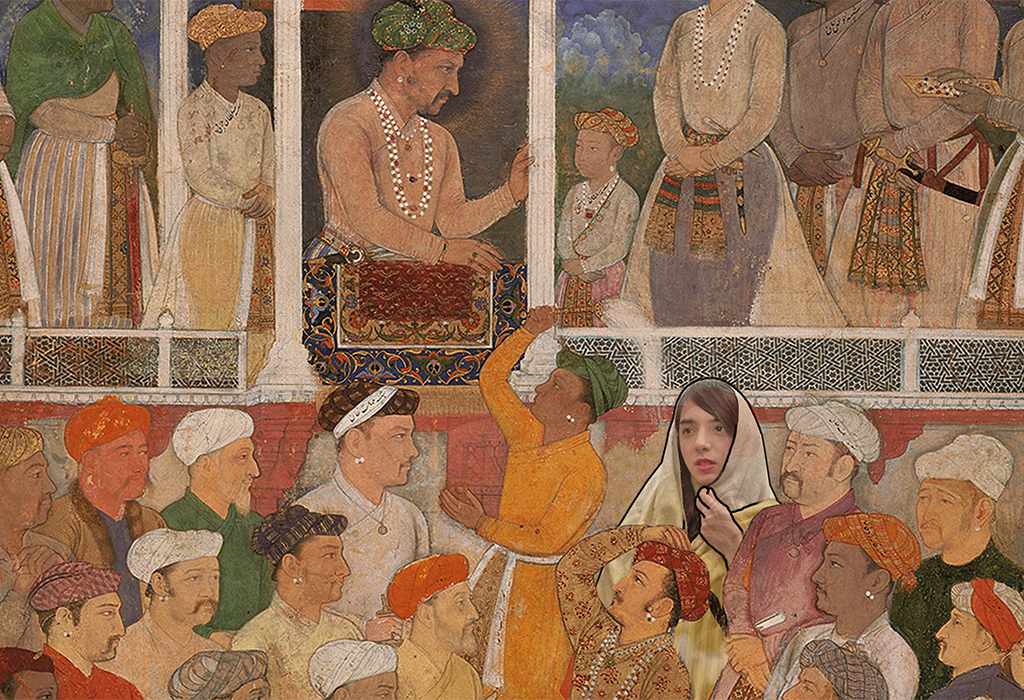

Beautiful write up. Enjoyed reading it Afsah.